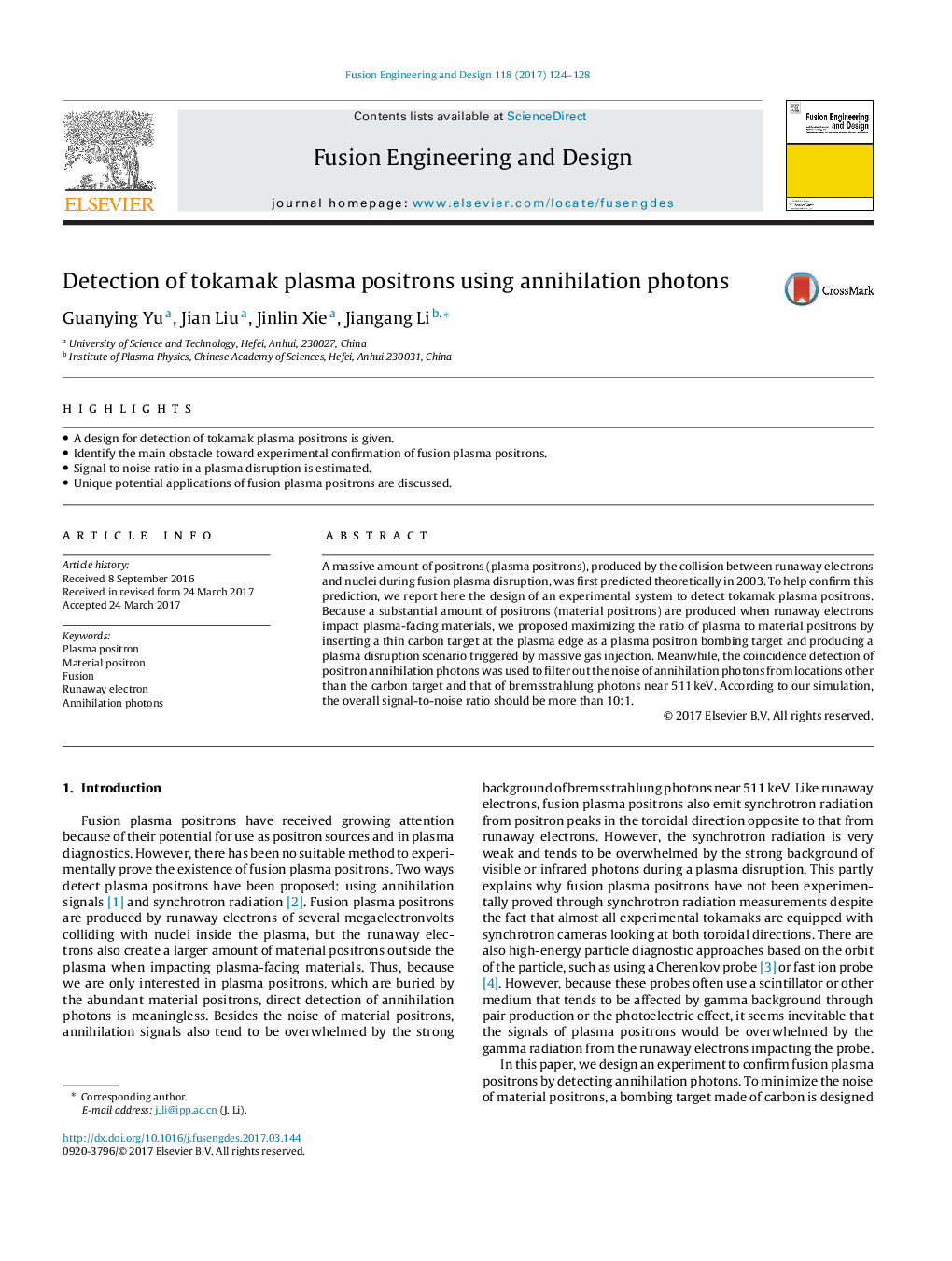| Article ID | Journal | Published Year | Pages | File Type |
|---|---|---|---|---|
| 4921142 | Fusion Engineering and Design | 2017 | 5 Pages |
Abstract
A massive amount of positrons (plasma positrons), produced by the collision between runaway electrons and nuclei during fusion plasma disruption, was first predicted theoretically in 2003. To help confirm this prediction, we report here the design of an experimental system to detect tokamak plasma positrons. Because a substantial amount of positrons (material positrons) are produced when runaway electrons impact plasma-facing materials, we proposed maximizing the ratio of plasma to material positrons by inserting a thin carbon target at the plasma edge as a plasma positron bombing target and producing a plasma disruption scenario triggered by massive gas injection. Meanwhile, the coincidence detection of positron annihilation photons was used to filter out the noise of annihilation photons from locations other than the carbon target and that of bremsstrahlung photons near 511Â keV. According to our simulation, the overall signal-to-noise ratio should be more than 10:1.
Keywords
Related Topics
Physical Sciences and Engineering
Energy
Energy Engineering and Power Technology
Authors
Guanying Yu, Jian Liu, Jinlin Xie, Jiangang Li,
